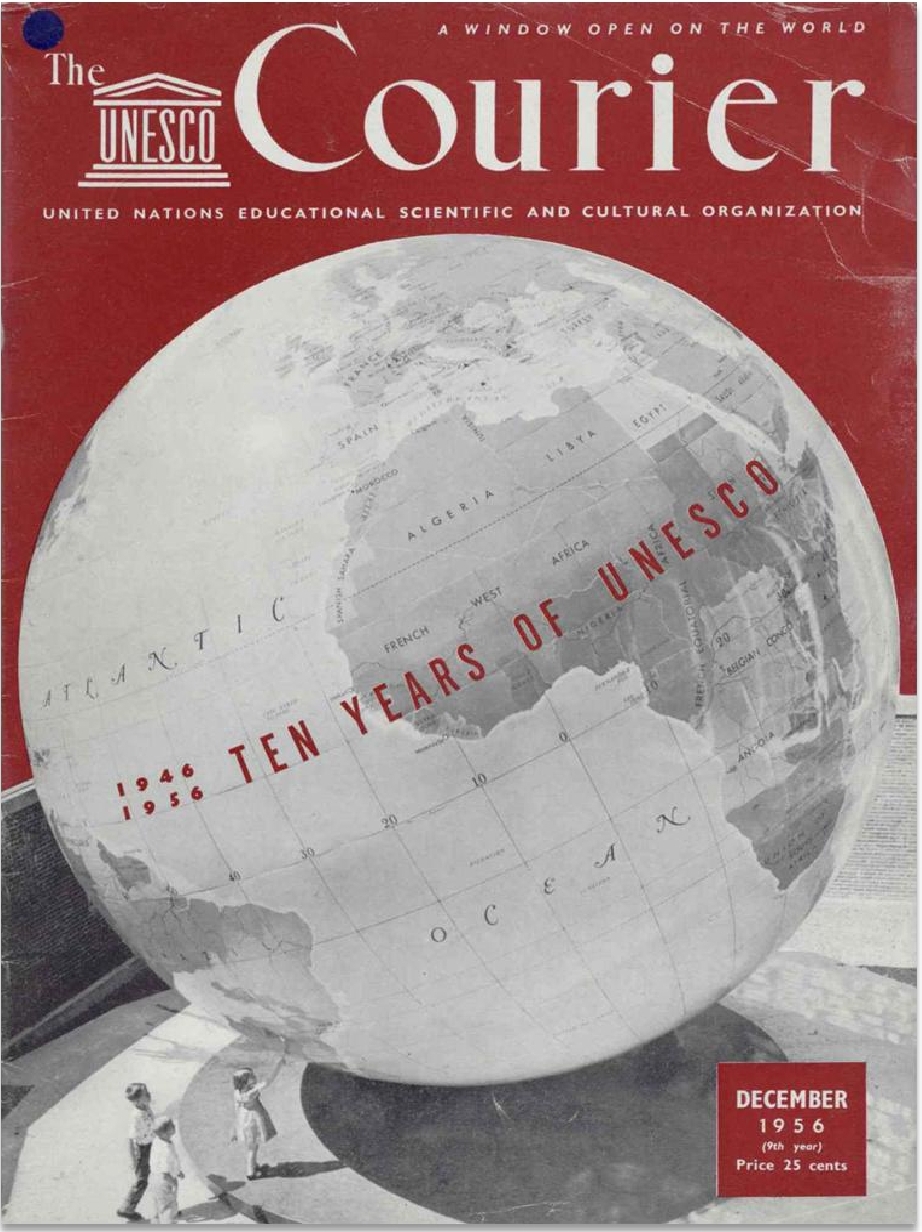
March 23, 2015, by Harry Cocks
Unesco and Photography: Making the Post-War Peace
In 1955, the French National Commission to UNESCO (United Nations Educational Social and Cultural Organisation) recommended the establishment of an international centre for moving and still photography. Though never realized, this aim testified to a widely held belief in the idea that visual media would speak across boundaries of language and nation, and assist in UNESCO’s efforts to create an international public sphere in order to secure peace. As Ahmed Bokhari, Under-Secretary of the United Nations said at the time, “Photographs do not need translation. They cross barriers to language and illiteracy to bring their message to people everywhere.” To further this aim, UNESCO made extensive use of photographs in its exhibitions, campaigns and publications, including the archive of works of art and photojournalism from the ruined cities of Europe. In a new article (see link below) Tom Allbeson, a post-doctoral fellow at the Centre for Advanced Studies attached to Nottingham’s History department, argues that this project was not simply about visual communication of internationalist ideals, but rather was a formative influence in shaping UNESCO’s effort to build ‘peace in the minds of men.’ One of the key examples of this approach was the “Family of Man” exhibition, seen by more than 9 million people in thirty-eight countries.
Other key examples of this photographic mission included the photo-magazine, UNESCO Courier (above right), the use of which shows how the deployment of such mass communication technologies had its roots in the use by all sides of wartime documentary and propaganda. The magazine, alongside two other titles, (the Human Rights Exhibition Album, 1950,and Children of Europe, 1949), showed how UNESCO’s mission as a whole aimed to encourage two key concepts: ‘world culture’ and ‘world citizenship.’ The magazines often featured hopeful images of the post-war world, especially children battling against harsh circumstances amid the ruins of European towns and cities.
The humanist internationalism behind such efforts was critiqued by, among others, Roland Barthes, who accused such photographic projects of reducing all to a banal common humanity, thereby effacing history, power and understanding. Similarly, Hannah Arendt attacked the Human Rights Exhibition Album for limiting culture to a form of unchallenging mass entertainment. However, Allbeson agrees with those who responded to Barthes by saying that photography of this kind did not simply occlude history, but rather produced new ways of seeing the world. It was not ideologically innocent, as UNESCO’s photographic project reproduced an idea of European culture’s inherent superiority. However, Allbeson says, we should see these photographic campaigns as an attempt to universalize certain humanist values, ideas that were intimately concerned with questions of vision.
Tom Allbeson, ‘Photographic Diplomacy in the Postwar World: UNESCO and the conception of photography as a universal language, 1946-56’, Modern Intellectual History (published online, January 2015)
http://dx.doi.org/10.1017/S1479244314000316
No comments yet, fill out a comment to be the first

Leave a Reply